Lithic Literature is asking to be read: A quick glance at the past.
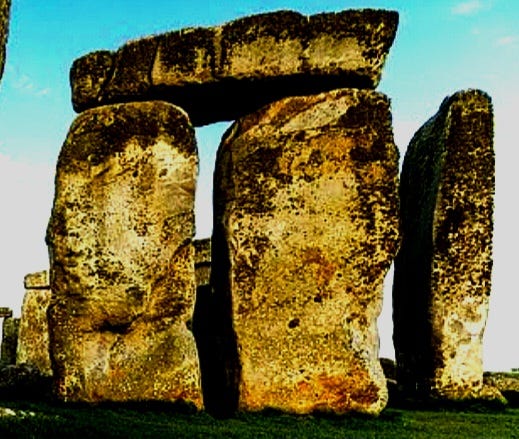
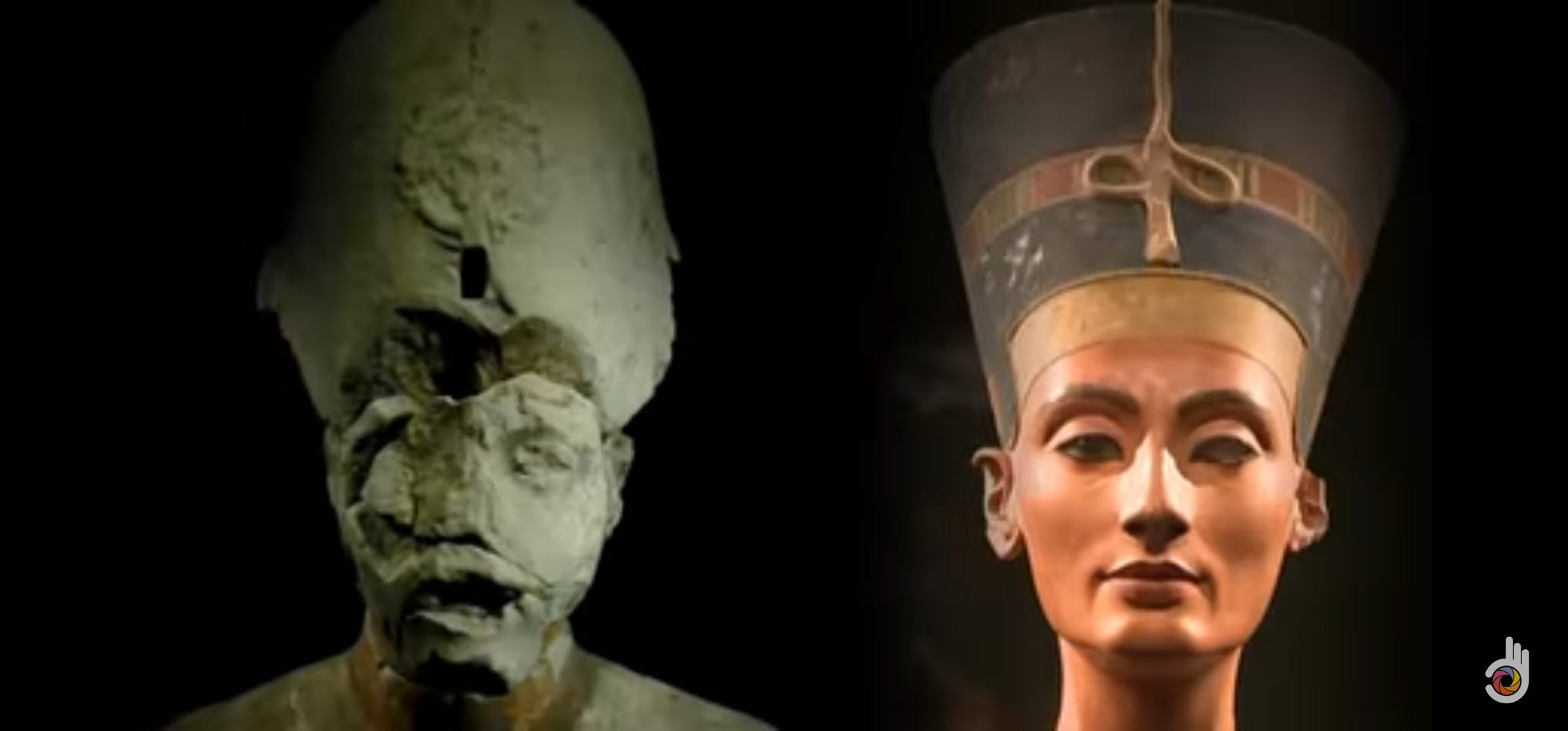
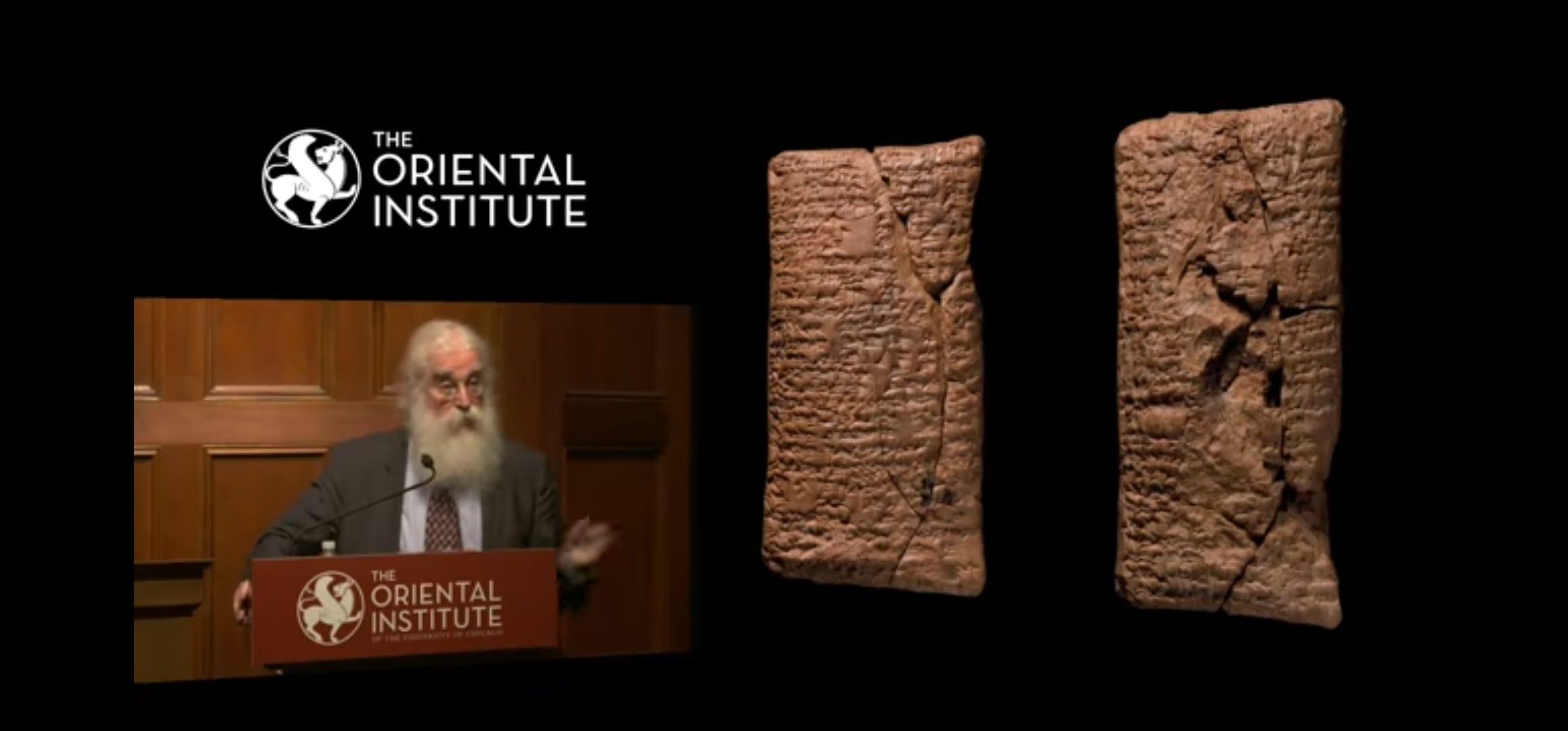
Lithic Literature is asking to be read: A quick glance at the past.
We have been looking at lithic literature to follow subject matter and see what information it holds. Lithic literature is a form of communication that allowed early humans to communicate in a world when we all spoke in multiple dialects and languages. The mission to bring this pictorial communication to light is what this blog is about. We have been following the Venus and her life in ancient times. As we have pointed out in previously how lithic literature is a multilayered affair. As the viewer follows the subject that they focus on, you will still be presented other material. Even with my nose to the ground, some material presented is so jaw dropping that I am compelled to share. I really try to mind my own business but when a heading states there are new findings, I do give a little gawk😮 . There is huge amount of material in lithic literature reaching back into the mind and history of the homo sapiens and is incorporated into all human works of ancient times. Here are some of the recent tidbits that are super interesting.
Although the article is good, their idea of discovery is a little different from what I found. The first thing that caught my eye was the elephant. I find it fitting that the elephant in the room is still not mentioned in the article. I am also seeing these two megaliths work as a diptych. They work well enough alone but work better together. Upon seeing the elephant the pattern is quickly set up. If there is an elephant in the room there will be an animal parade to follow. As in many animal parades there usually is an ark. Yes we have an Noah's ark at Stonehenge! Now, do I believe that there was a Noah’s ark? In some ways I do. I do think that the floating Guffa was very handy when it came to ferrying large animals
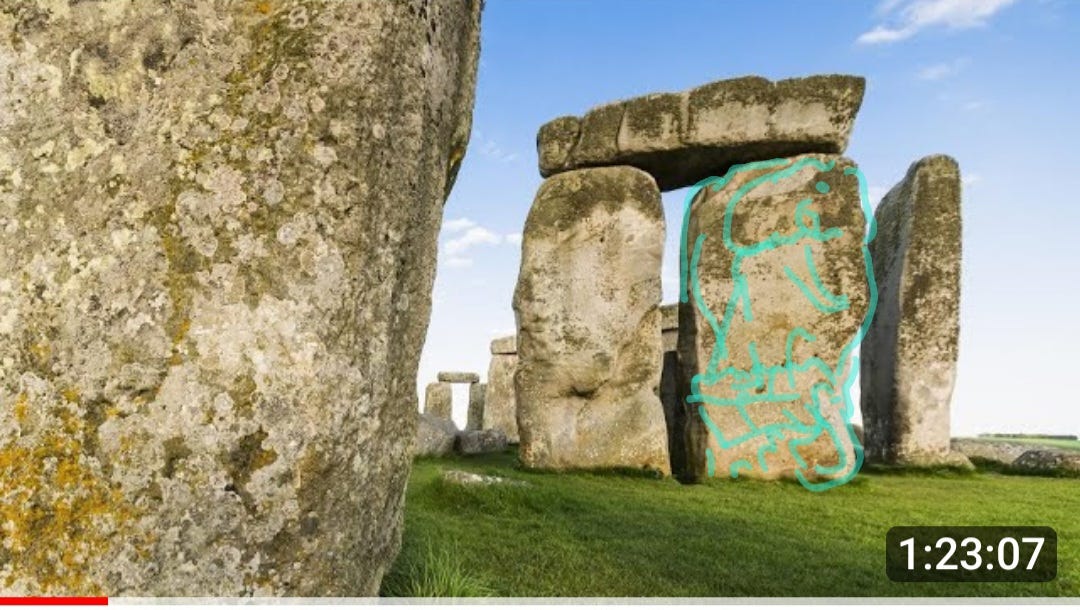
I have no doubt that these ferryboat were outfitted with a shelter for humans as well as an awning/sail/water collector. Irving Finkle did us a great service by part taking in the creation of such a vessel. I am sure he would love to see the Stonehenge animal ark.
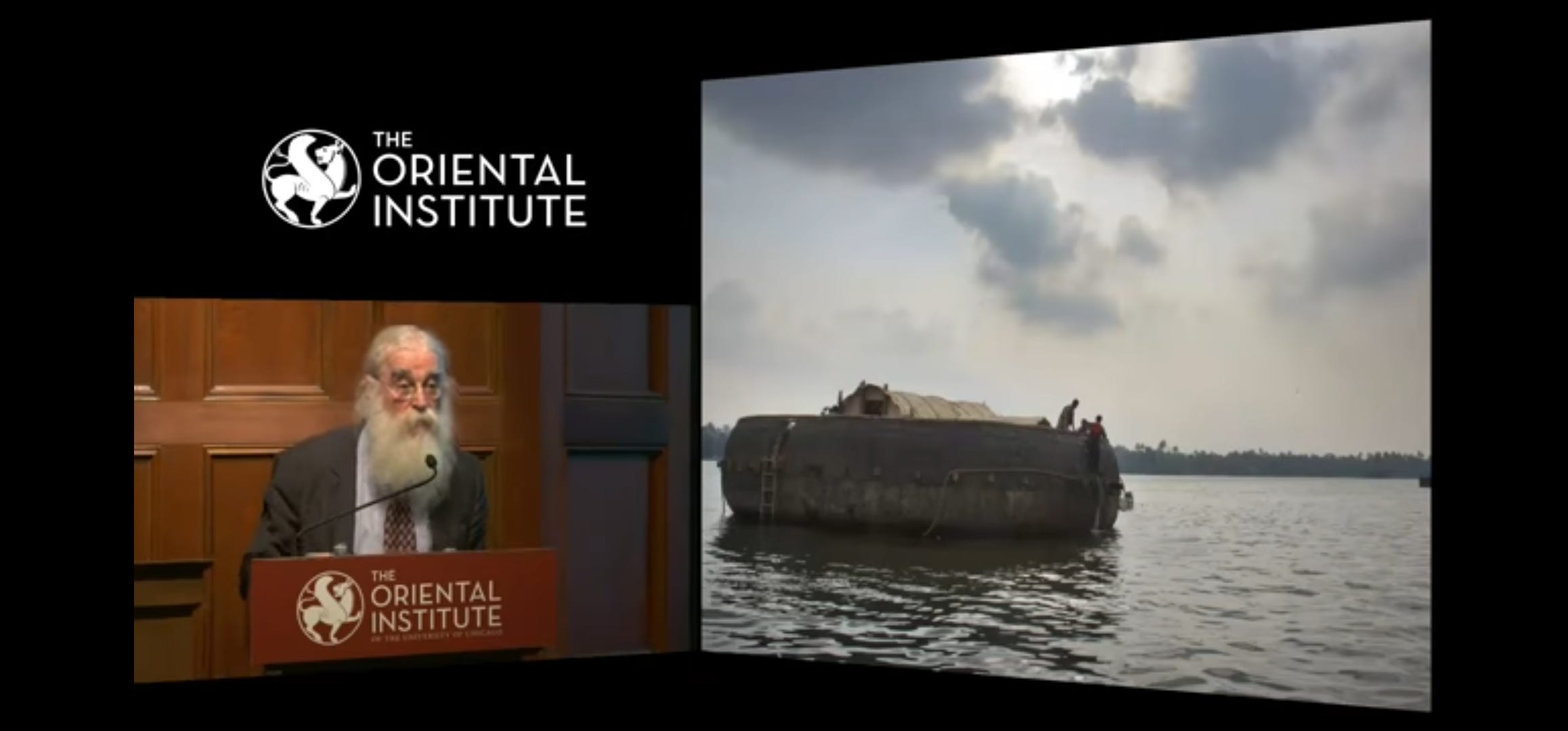
In the image below, the rising water is highlighted in light blue as it rises up around the giant guffa. The guffa is highlighted in charcoal and its basket woven structure can be spotted in the rendering by the artist. You can make out the roof structure and the animals in the upper quarter of the right vertical stone below. The structure is very much what Irving Finkle projected.
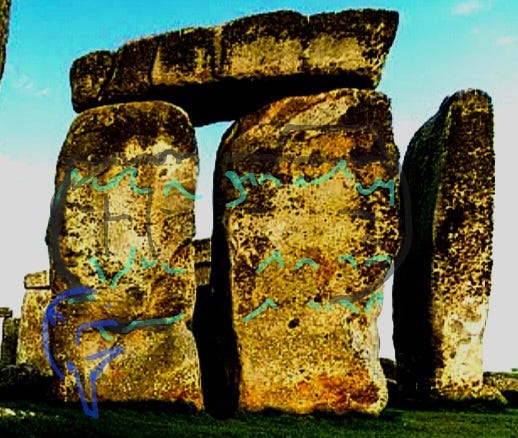
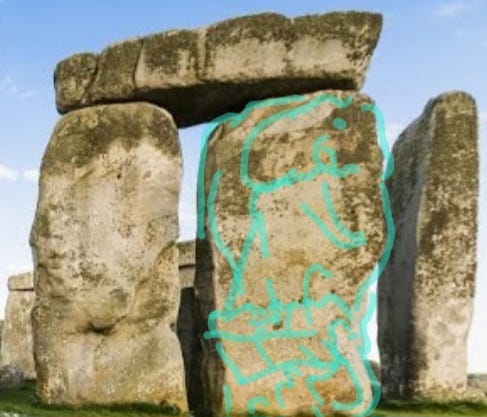
The elephant is not new in the lithic literature quest and if you have been following a long, you will note that our diptych is a triptych and that the giraffe is using the stone lintel to neck its way above the elephant. After spotting the giraffe we can start seeing the elements that unify the three megaliths. The basket work design is a hint as it continues its way horizontally across the two vertical stones. Basketwork was employed to create nesting sites and encourage birds to nest. If you had to be on a self-sufficient craft, baskets with nesting birds would add to the food supply. Basketwork made of bamboo like material is resilient even in water, adding strength to the structure while adding little weight. When it comes to boat designs there are always many views. One rule is the bigger the human the smaller the boat or the smaller the human the bigger the boat. There is a basket pattern that holds the monoliths together as it renders the large vessel. The top quarter of the right stone you can see the artist rendering of the as shelter for the human family. The lintel works as a huge awning that would be needed to collect fresh water to maintain life for a longer period if needed as well as shelter from storms. For those who are following the climber he is highlighted below in red. The climber can be spotted around the world climbing trees or cliffs often reaching for eggs and honey, or climbing out of the water. Here the climber is clinging to the Guffa. I do not want to mention sharks but being in the shelter of the guffa is a better situation.
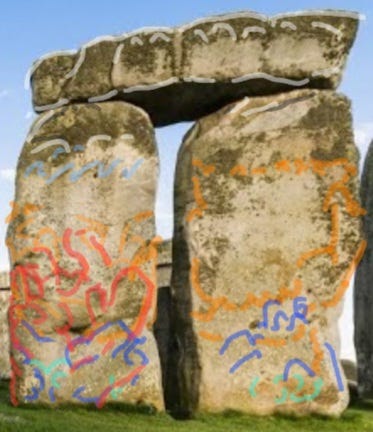
Stopping at the tourist trap offered more than I could ask for. I could get trapped here for a long time deciphering the show left by the ancients. As always they do not disappoint. There is so much material here it is hard to turn away. with a quick glance the design offers warnings regarding long necks and trunks. If you look, there are human attendants discouraging the giraffes and elephants from drinking the salty sea. The giraffes may have needed special care. I hope we can provide the extra care that they need today as their population dwindles.

Its not hard to bring in the T-pillars at this time because this should start ringing some bells. The similar basket and animal elements that stand out are highlighted below. I know! Take a good gawk, and feel your jaw drop. This is a thrill that only lithic literature can offer. I stop and shake my hands around in delight. The missing lintel would be mute if there was an actual awning built into the architectural design at Gobekli Tepe.
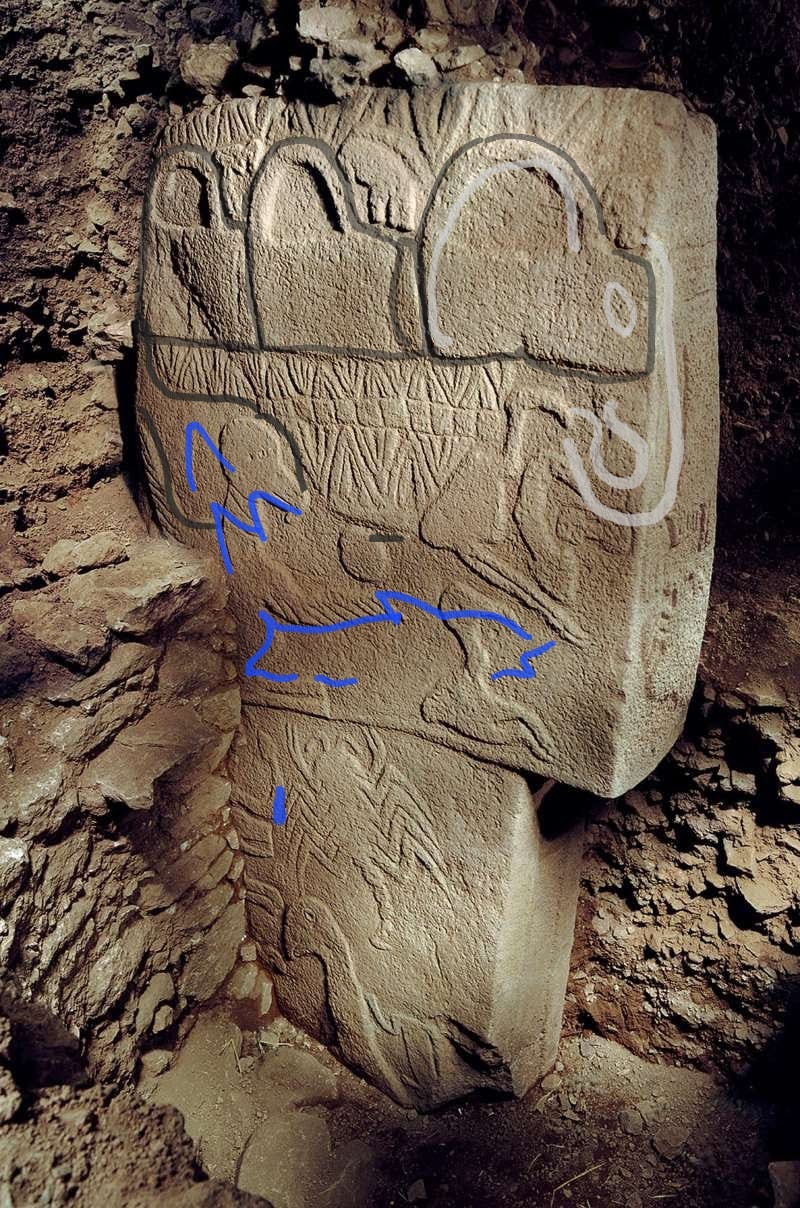
another element that joins the two stones is the female with a long braid and helmet headdress who’s extended arm crosses over to the next stone. What is she pointing at? The left stone has some blue highlighted elements that can be read as a face and many other adventures. I hope you take some time to explore these possibilities.
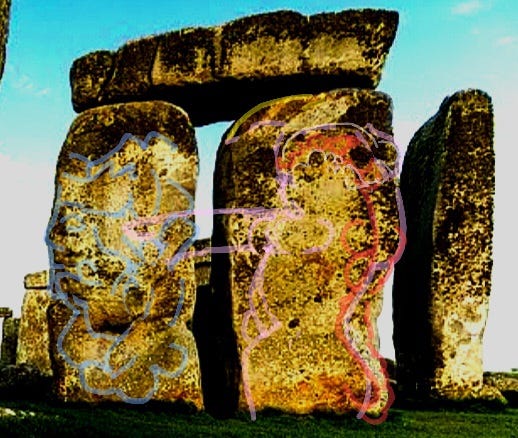

It is hard to pull out of Stonehenge. To find Lithic Literature dressing the megaliths is amazing but not surprising. We will take pictures and document for the future. I must pick my battles and Stonehenge is well protected. I hope. My focus is the Venus and her life story, but I am still compelled to take a moment to point to another tourist trap.
The Mystery of Nefertiti’s Bust | Documentary
https://youtu.be/57YijZjZmsw?si=mFNIqMWBA7xfGC6_
I was just heading in the direction of the Venus, when something caught my eye. Like any other tourist trap I had to stop and gawk. It was brilliant at first but then it made me question everything. A bust found with Nefertiti in the artist workshop was found broken and still looked broken after repairs 😆. At first I was dumbfounded, I quickly found how the ancient artifact had been miss handled. It has actually been altered over time. The original was more like the sphinx.

In the original images of the supposed bust of Akhenaten, the bust was found broken and still appeared broken after repairs. This information immediately caused my head to tilt and ears perk up. This is not a broken portrait of a pharaoh. This is a picture book. It is the same picture book found on the façade of the sphinx. This idea that they are broken may not be true. Of course there is some damage due to time and exposure, but it was not damaged to be disfigured and still holds the intentional form. We are looking at lithic literature. The image of the bust on the left below has been obviously “ repaired”, while the one on the right is the intended form. This is a good time to point out how lithic literature needs to be accepted before it gets destroyed. There are folks out there that are handling the material as if they were Mr. Magoo, blind to the design in front of them. I hope that the original was not mishandled and that it was just a copy that was “repaired”.
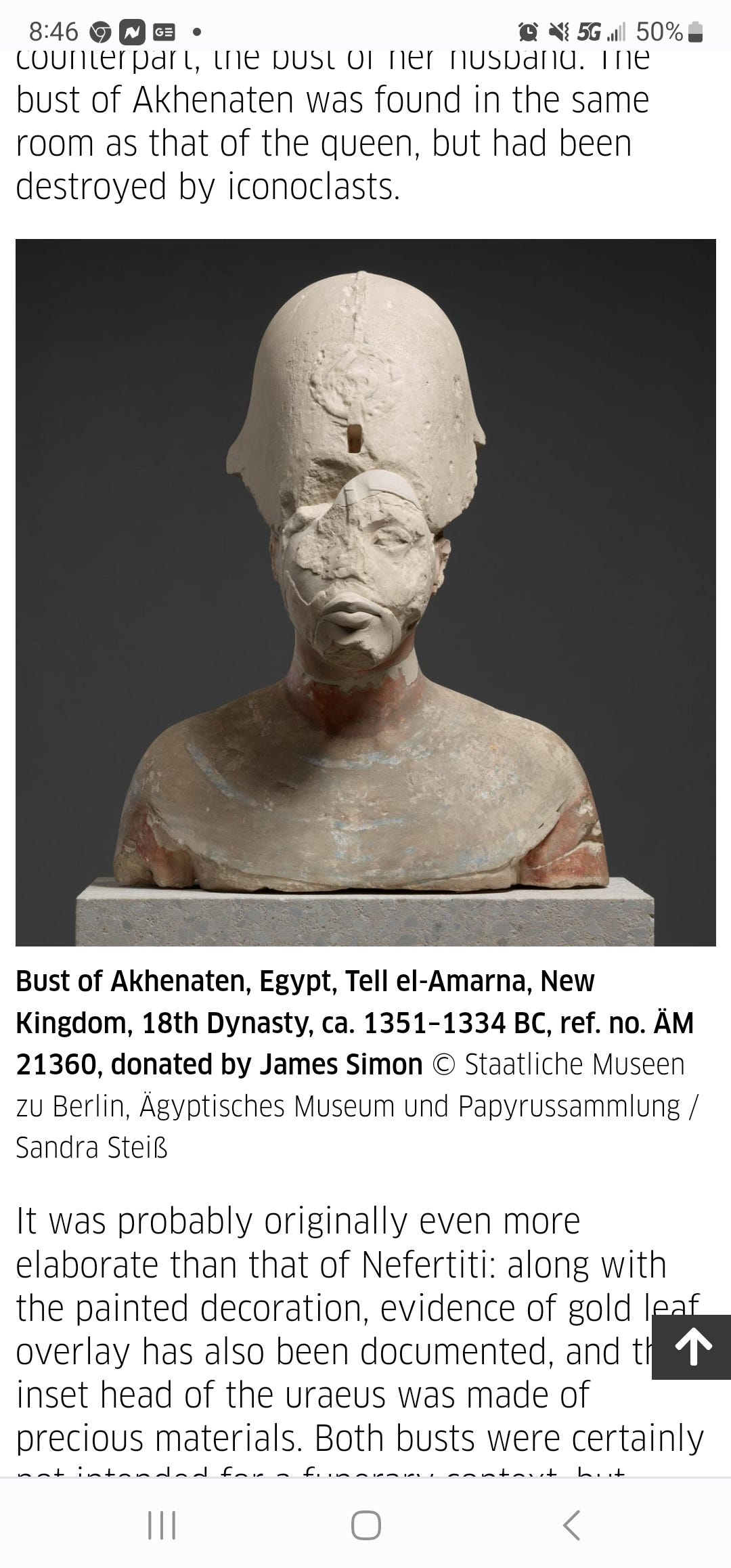
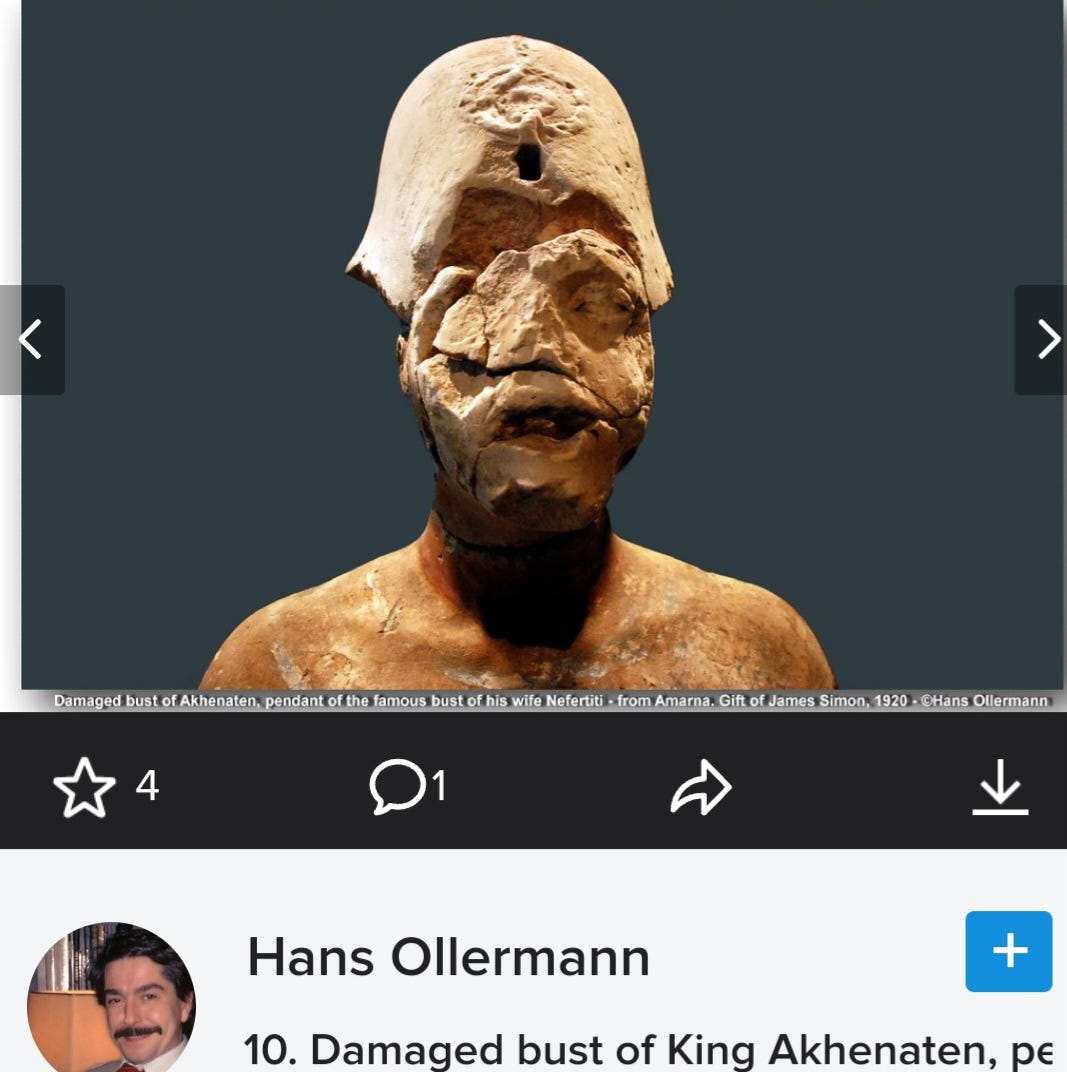
I had no problem lifting the design rendered all over the pharaoh’s face. It was very exciting to find. I also was perplexed. There is always a possibility that I am all wrong so I immediately researched other monuments and artifacts form the era. Below I have included some layers. The climber is a character that a occupies a place in the design. I have highlighted him in red. He is often seen climbing in different layers. He can climb trees, cliffs, and the side of boats. The layer with the central tree that stands in for a mast that is included in the boat designs is also mapped out below on the right.
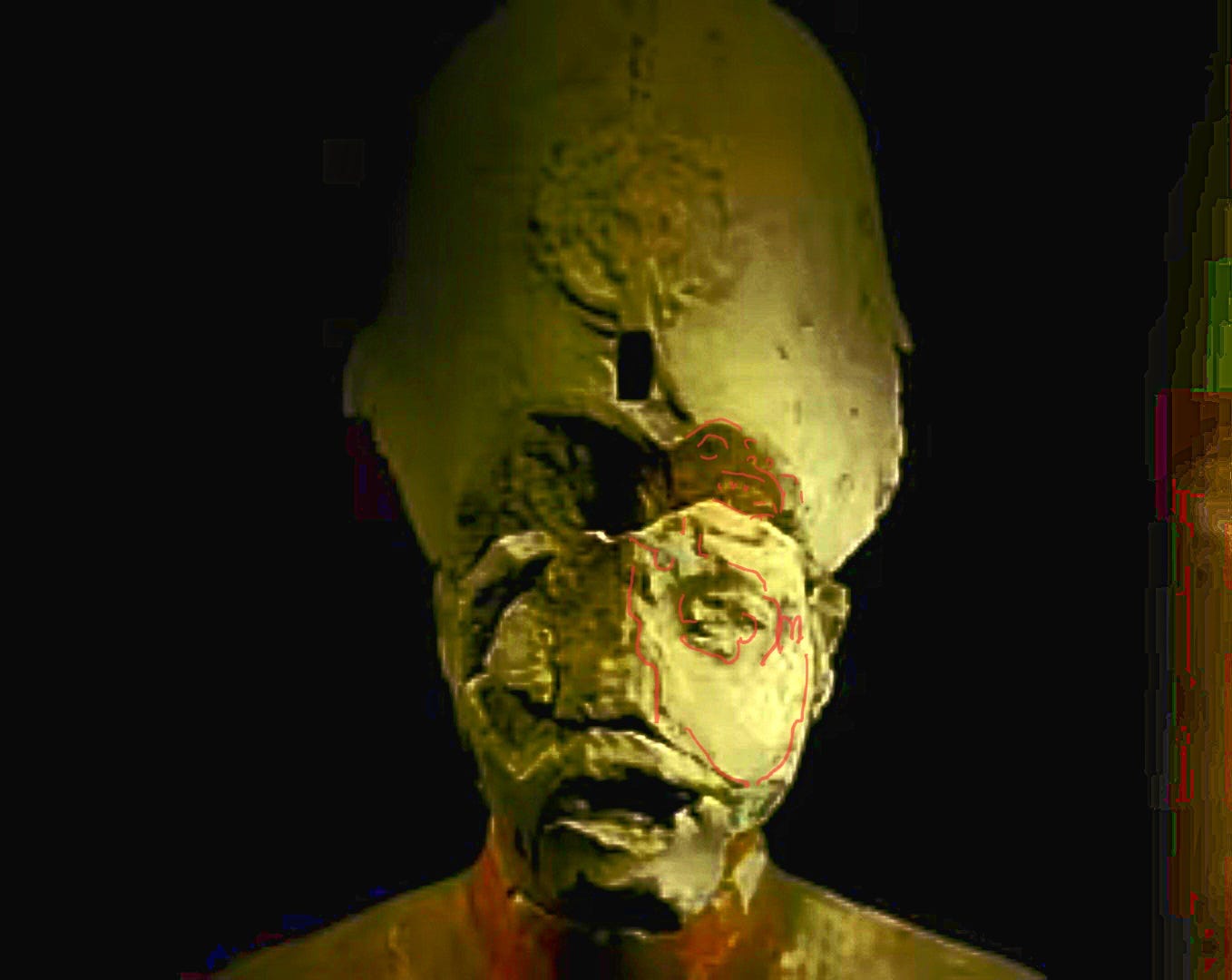
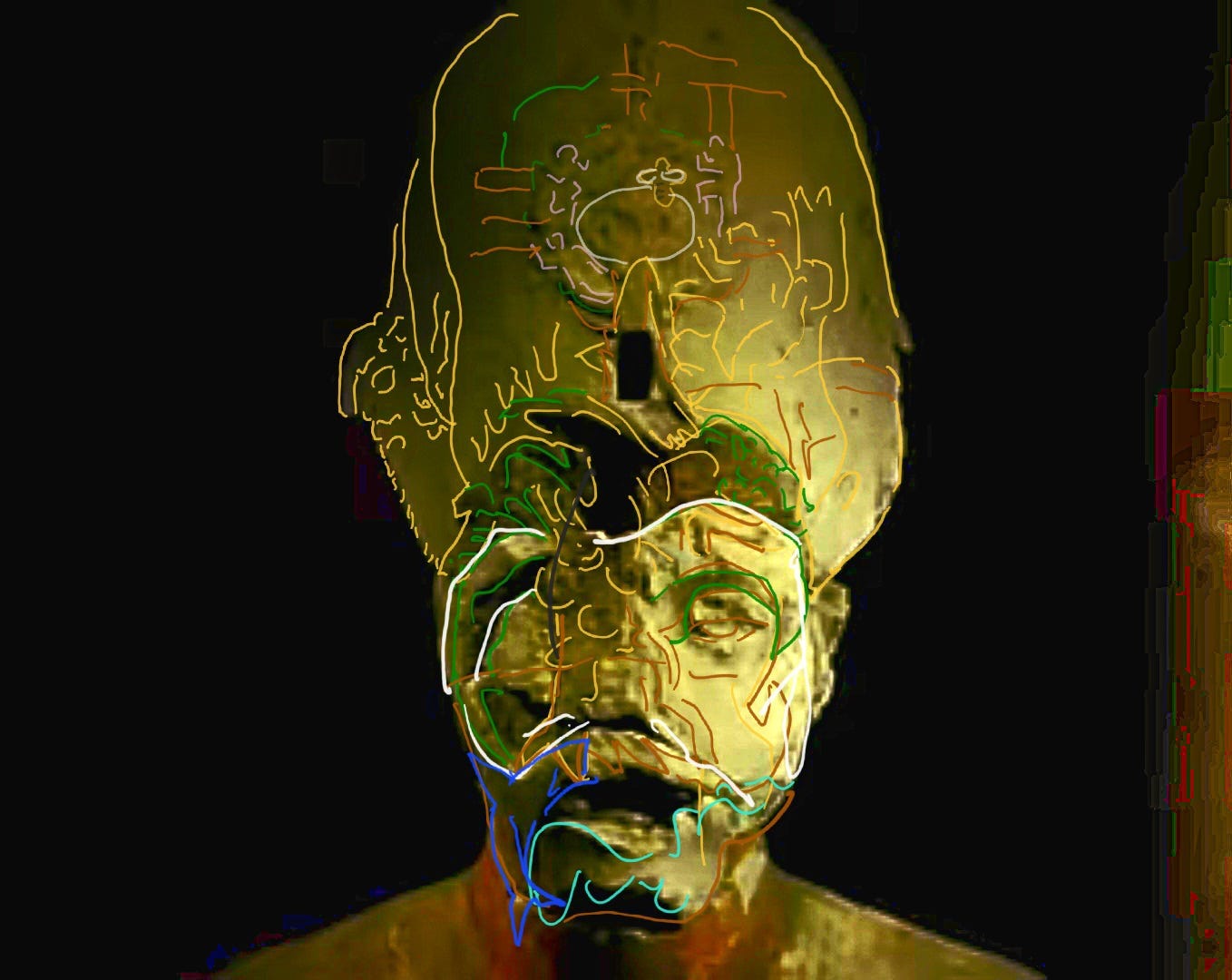
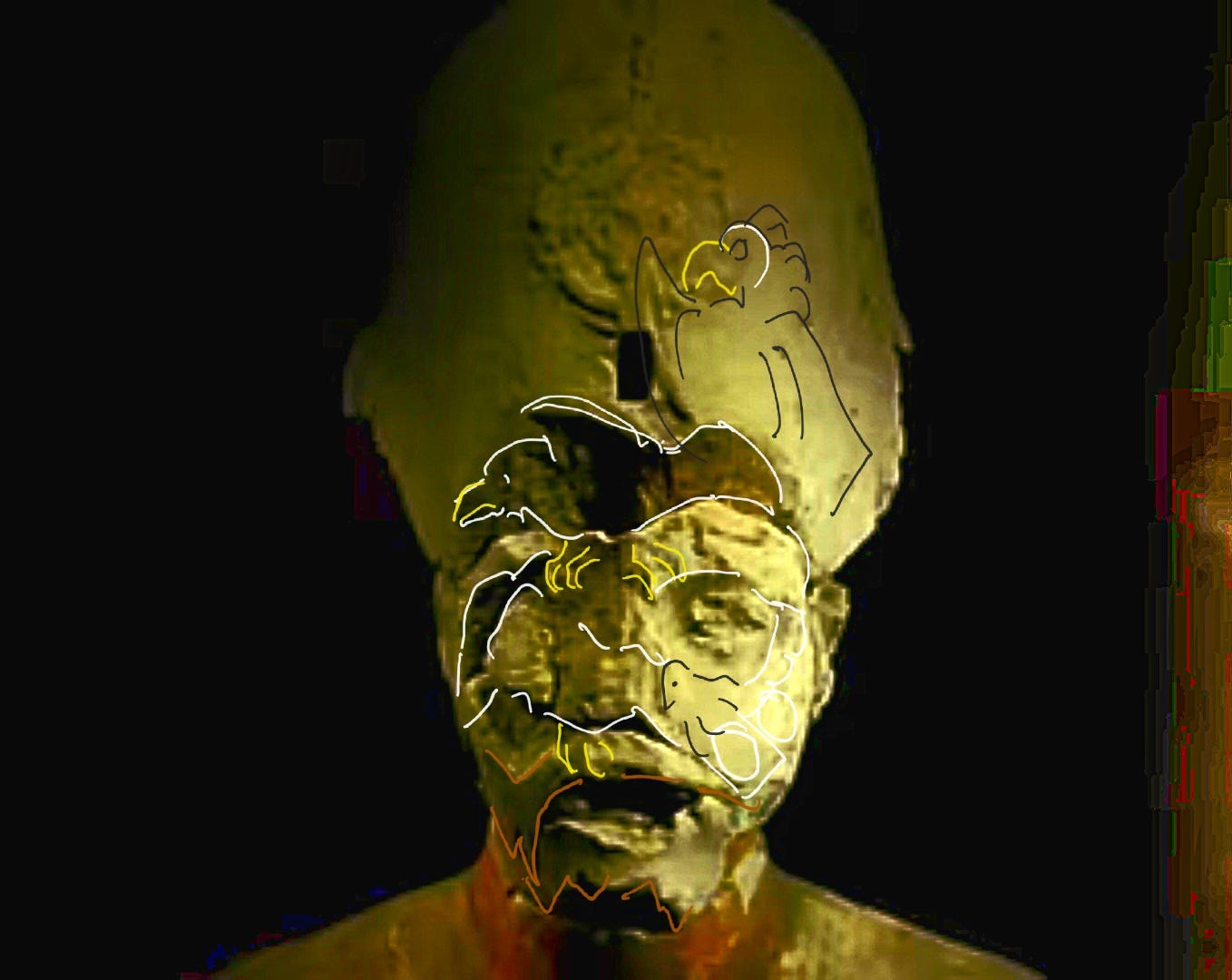
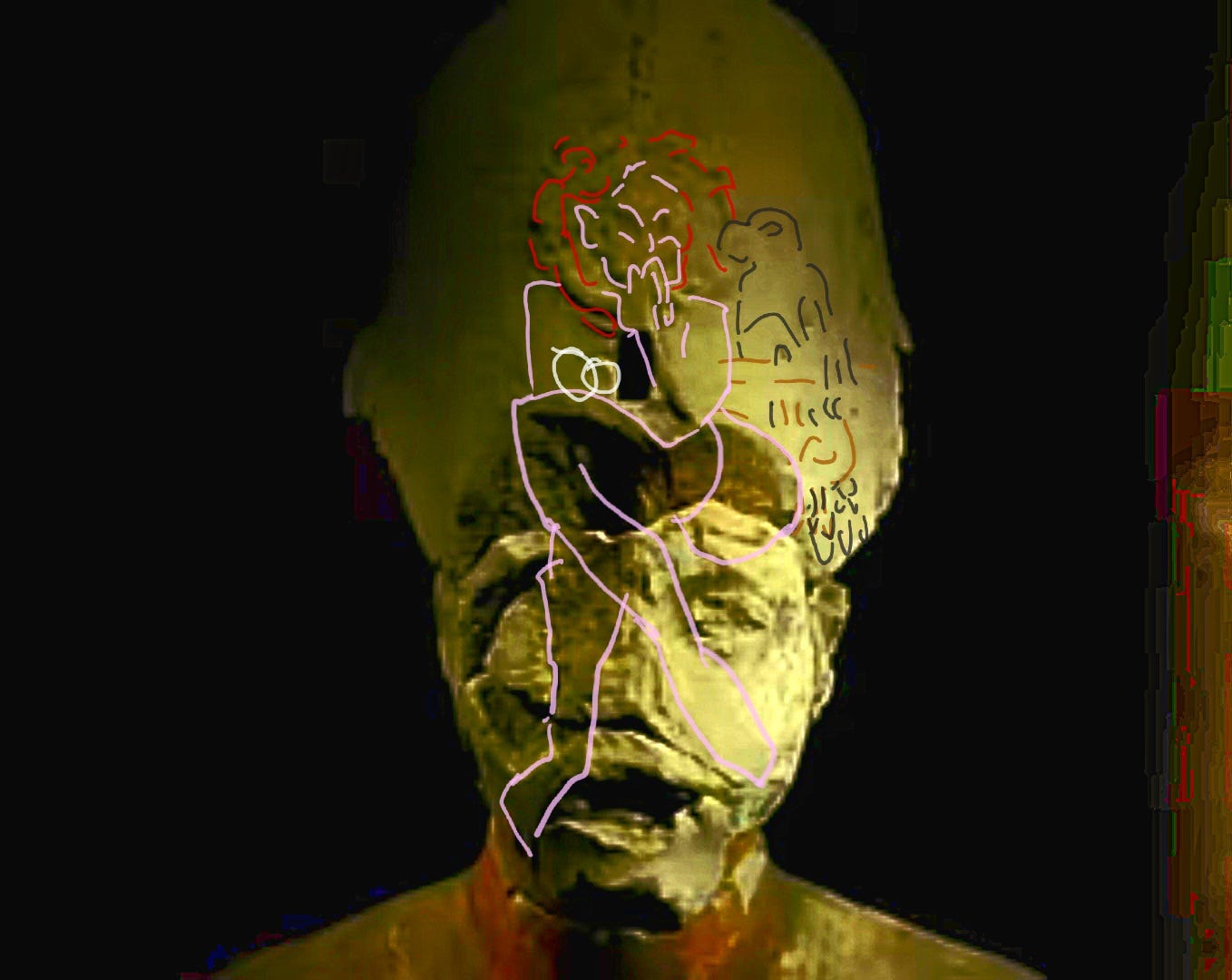
I was amazed but needed to see more support for my findings and immediately researched other monuments from this Egyptian era. I found alot. For all those Mr. Magoos out there, please assess a little more before dismantling or repairing ancient works. My first quick stop is the Colossus of Memnon is not broken either! The madonna/venus holding her baby is highlighted on the right below.
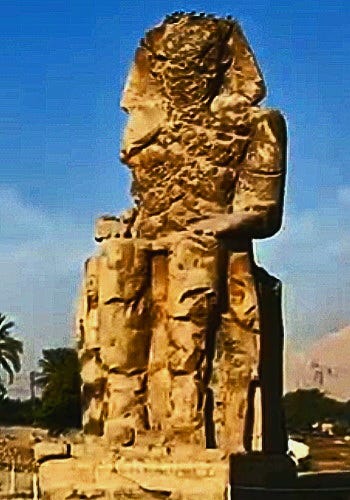
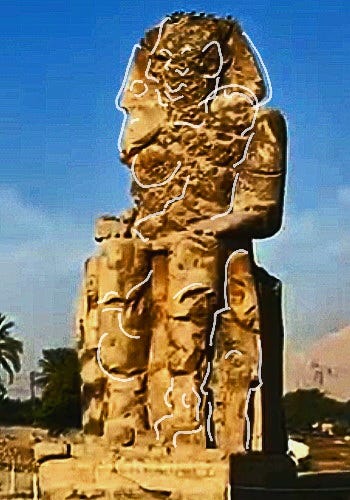
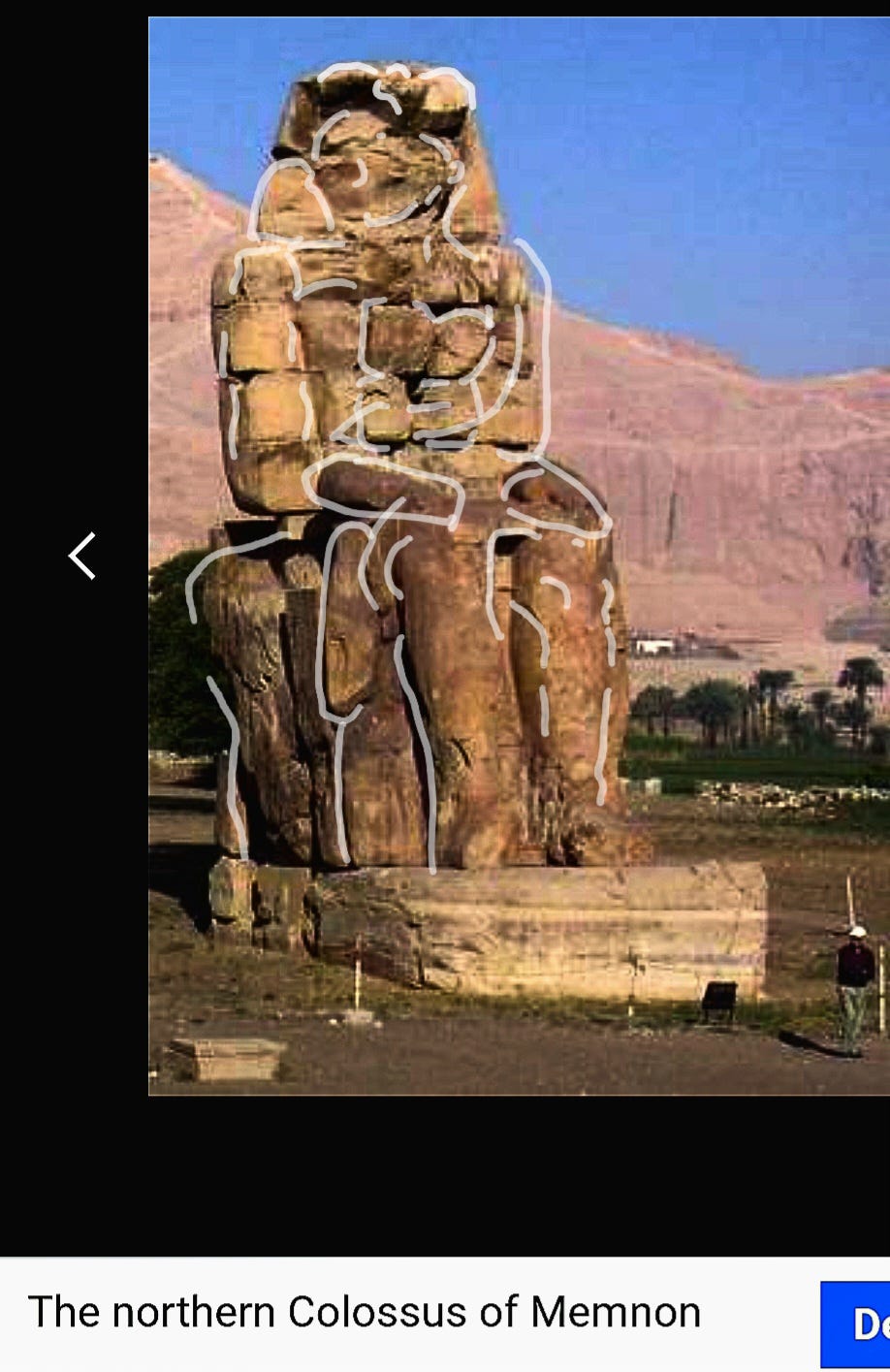
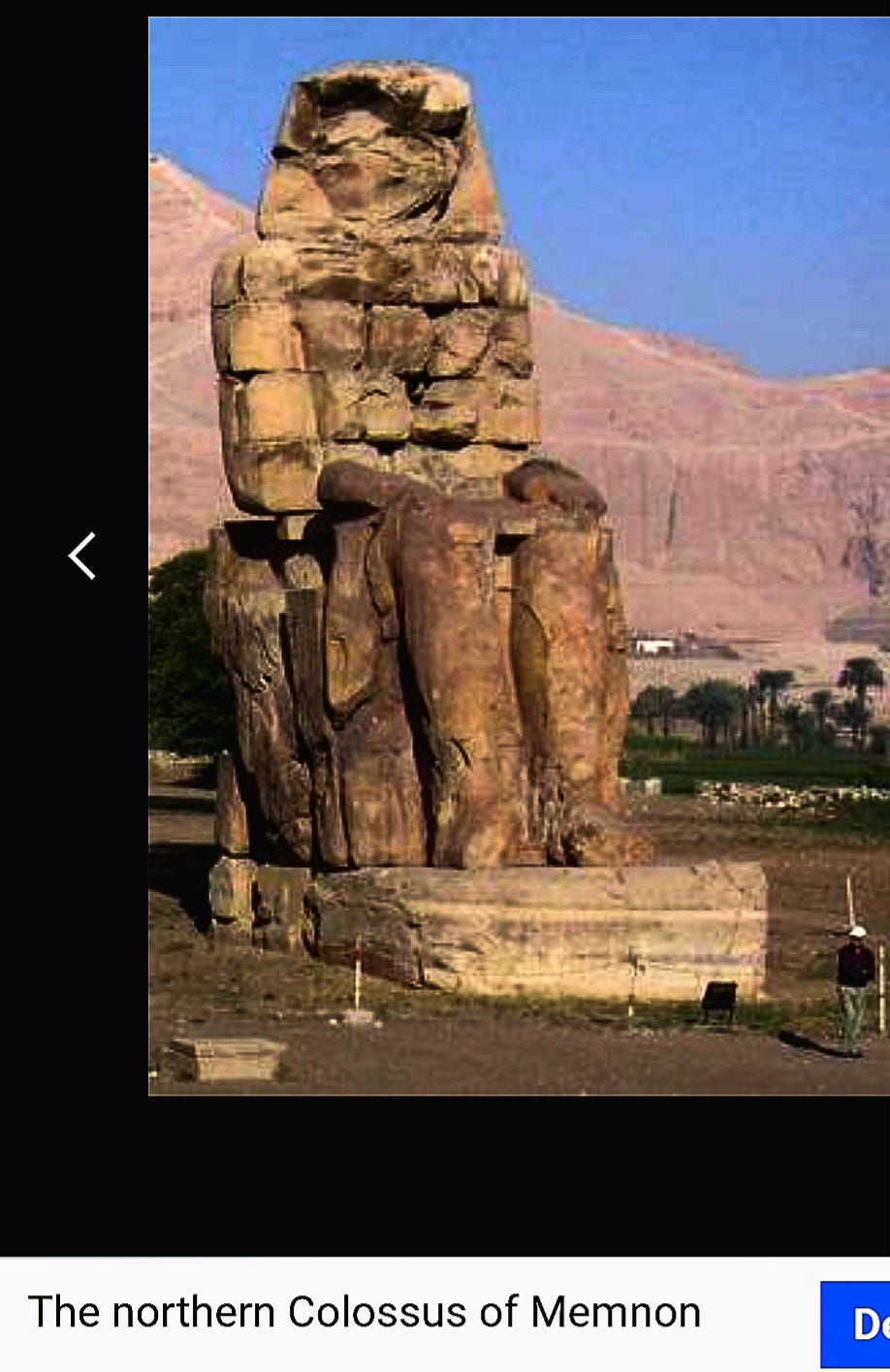
The Colossus of Memnon was definitely colossal , but the Sphinx is even more so! I am convinced that it too is less broken than recently believed.
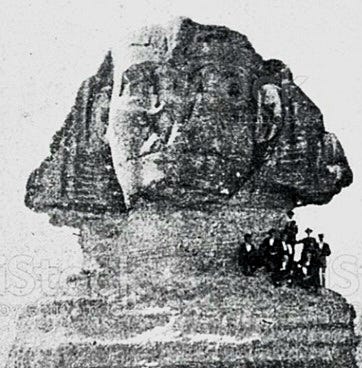
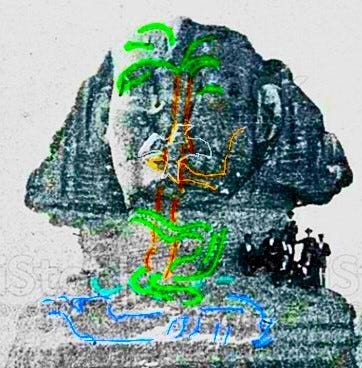
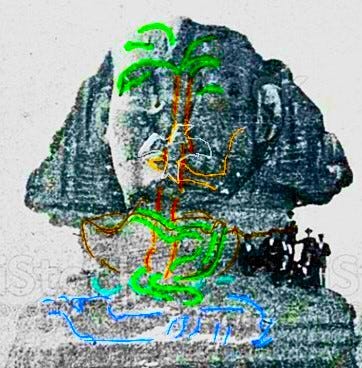
For those who are following and have developed their ability to decipher this material on their own, I hope you are having fun. I am thrilled to find Lithic Literature dressing these ancient monuments. There is information here reaches us from across time. The bust and the Sphinx share the landmarks of the tree, mast, vessel, shark, etc.


Before heading back to tracking down the life of the ancient Venus I wanted to stop and thank Irving Finkel and his funky boat that may have saved the food chain from catastrophe. He was able to decipher the cuneiform on a clay tablet. A clay tablet the was dressed with lithic literature before adding the cuneiform. I am so grateful for his contributions. Thank you so much.

There are multiple layers as always on the clay tablets. I have quickly highlighted in white below a human figures; a bearded tall man looking to the left, and a woman with braided hair holding a child. Those who have been following the design should find the figure familiar.
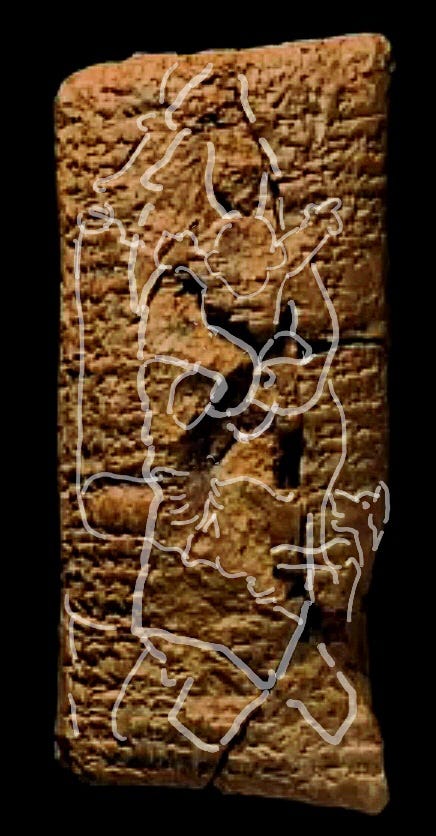
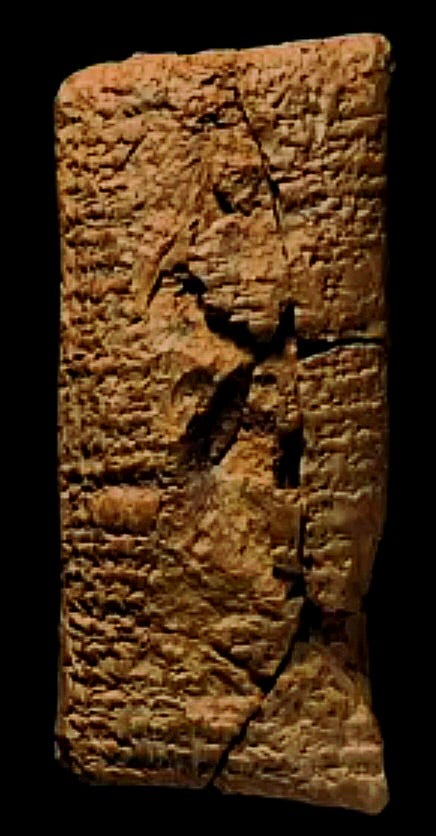

Thank you so much for looking. Please do not stop looking. I want to thank you for your patience, I am new at writing and it is not easy. I am also very stubborn and like to figure things out on my own. Please bare with me. Thank you again. This little pitstop has been a great relief.
Thank you so much for looking. Please do not stop looking. I want to thank you for your patience, I am new at writing and it is not easy. I am also very stubborn and like to figure things out on my own. Please bare with me. Thank you again. This little pitstop has been a great relief.
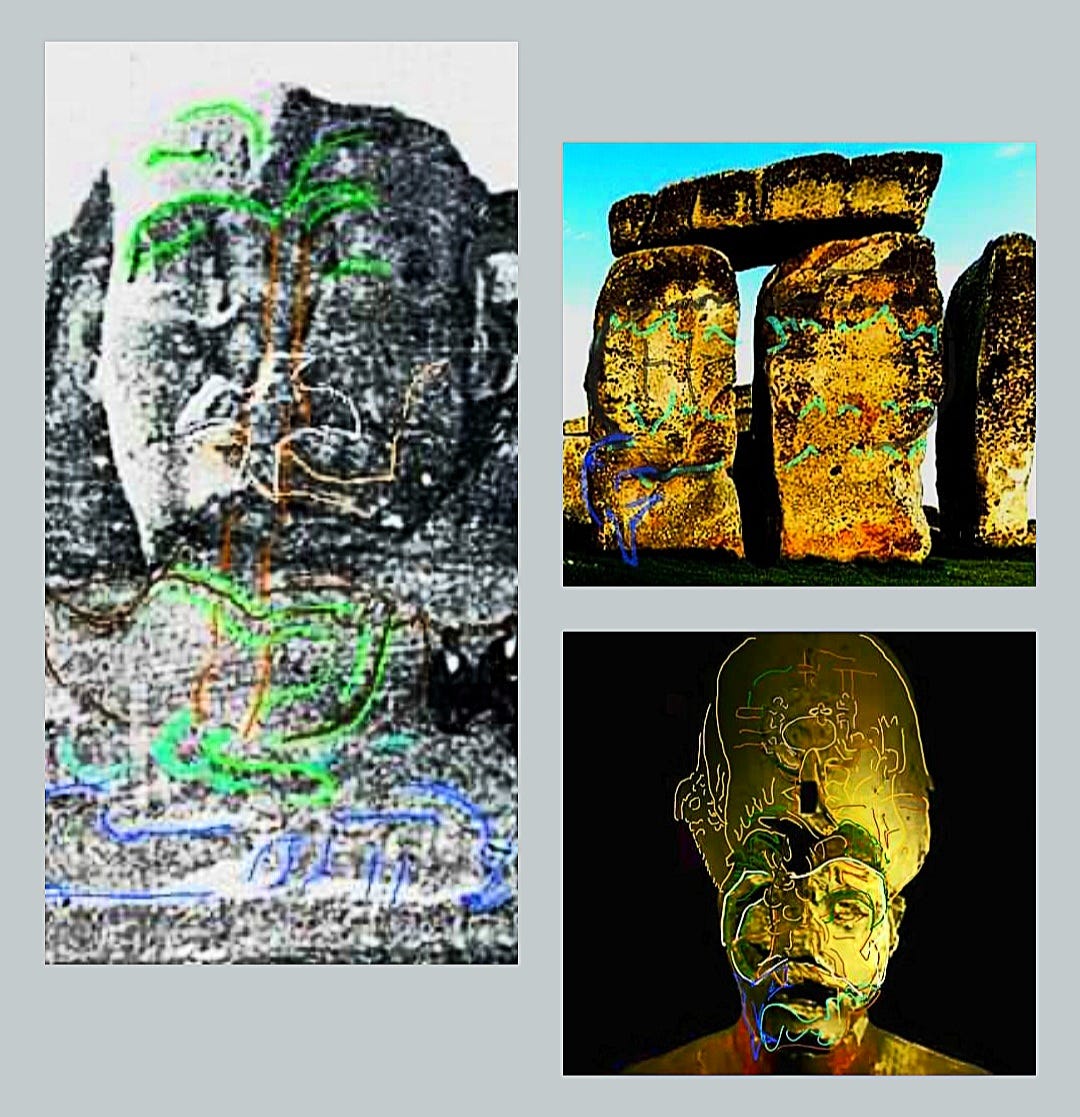


Comments
Post a Comment